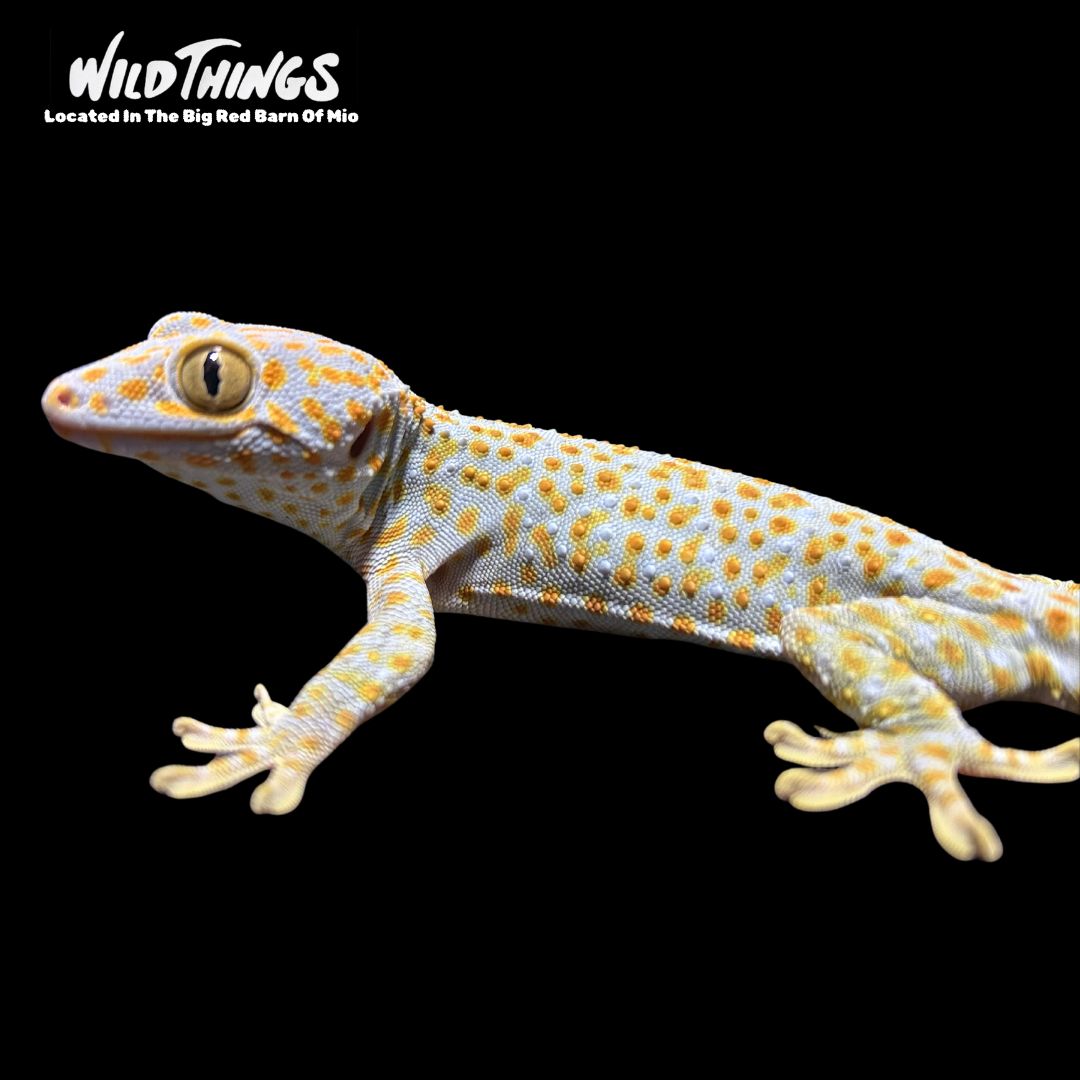AuSable River Outdoors
Tokay Gecko
Tokay Gecko
Couldn't load pickup availability
Species: Tokay Gecko
Scientific Name: Gekko gecko
Origin: Southeast and South Asia, including Malaysia, Indonesia, and the Philippines.
Lifespan: 7–20 years
Size: 8 to 16 Inches Fully Grown
Enclosure Type: They are also arboreal, which means that they need a terrarium that provides a generous amount of climbing space. A tall glass enclosure with front and top ventilation is recommended to prevent overheating and ensure proper airflow.
Enclosure Size: A 24"L x 24"W x 48"H terrarium is the minimum recommended size for a single Tokay gecko. However, particularly large tokays will need a larger setup at least 36″L x 24″W x 48″H. Due to a tendency toward highly territorial behavior, it’s best to keep only one pet tokay gecko per enclosure.
Substrate:
• Coconut fiber: Good for retaining moisture and mimicking their natural habitat.
• Orchid bark: Another excellent option for moisture retention and aeration.
• DIY Tropical Mix: A mix of 60% organic topsoil and 40% coconut fiber can also be used.
• Zoo Med Reptisoil: A commercially available option that mimics tropical soil.
• Zilla Jungle Mix: Another commercially available option that is suitable for Tokay geckos.
• Exo Terra Plantation Soil: A good option for creating a naturalistic substrate.
Décor: Live tropical plants, vines, branches, cork hollows, decorative ledges. Provide lots of hiding spots and areas to climb up high.
Water: Although your gecko will get drinking water from daily misting’s, it’s best to always keep a bowl of clean water available.
Temperature: In the wild, tokay geckos warm up by basking in a warm patch of sunlight. In captivity, sunlight can be replicated with a white incandescent heat lamp.
• Basking area temperature: 90-100°F (32-38°C) The basking area should be a vine or branch directly under the heat lamp. Because your gecko is arboreal and will be living in a tall enclosure, the warmest temperatures will be at the top (near the heat lamp), and the coolest temperatures will be toward the bottom.
• Cool zone temperature: 80-85°F (26-29°C) The cool zone will be located in a hide or a corner/area furthest from the heat source.
• Nighttime temperature: 76-80°F (24-26°C) Because tokay geckos prefer warmer nighttime temperatures, you will likely need a lightless heat source for nighttime heating. One or two low-wattage ceramic heat emitters will work well.
Humidity: Tokay geckos do best in a high-humidity environment with humidity levels between 60-80% as measured by a digital probe hygrometer with the probe placed in the middle of the enclosure. If humidity levels that are consistently too high or low can cause health problems for your gecko. However, it is natural for humidity to be lower in the warm area and higher in the cool area. It is also normal and healthy for humidity levels to rise at night and fall during the day. To raise the humidity in your gecko’s enclosure (and provide an extra source of drinking water), use a pump-style pressure sprayer to wet down the enclosure every evening, and in the morning if necessary.
Lighting: Tokay geckos are nocturnal, which means that they are primarily active at night. However, they still need a light on during the day to help regulate their day/night cycle. Lights should be left on for 12 hours/day. Because they are nocturnal, technically tokay geckos can survive without UVB lighting as long as they get plenty of supplemented vitamin D3. However, you are still going to get the best results from using UVB lighting rather than relying on supplements.
Type Of Diet: Tokay geckos are insectivores, which means that they need a varied diet of insects to get the right nutrition.
Types Of Food: Crickets, dubia roaches, discoid roaches, red runner roaches, grasshoppers/locusts, hornworms & silkworms. Crested gecko diet and pinky mice should be offered as occasional treats no more than 2x/month.
Feeding Schedule: Juvenile tokays should be fed daily, and full-grown adults should be fed every other day. Offer as many insects as the lizard is capable of eating in a 5-minute period, no larger than the gecko’s head.
Supplements: Feeder insects need to be “dusted” with a light coating of calcium powder before every feeding to balance their calcium-phosphorus ratio, and adding a multivitamin to the routine helps prevent deficiencies from developing.
Share

